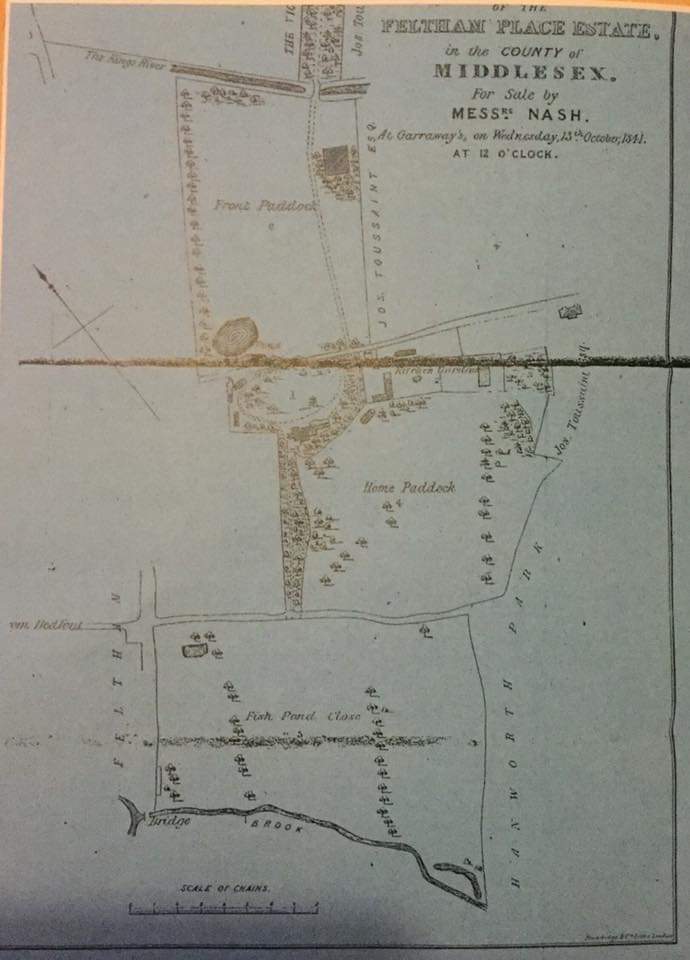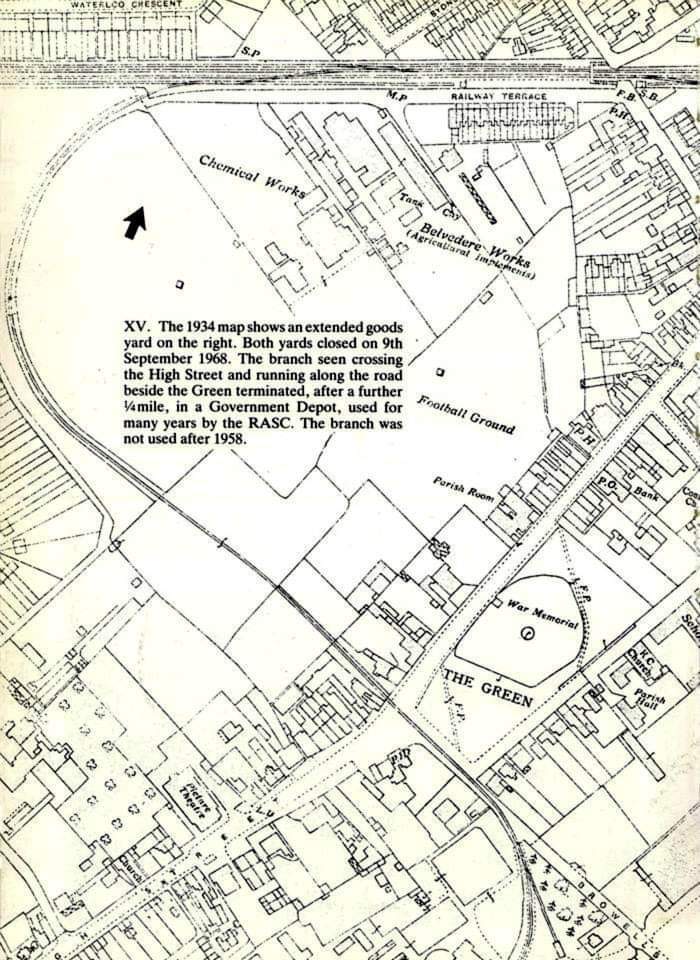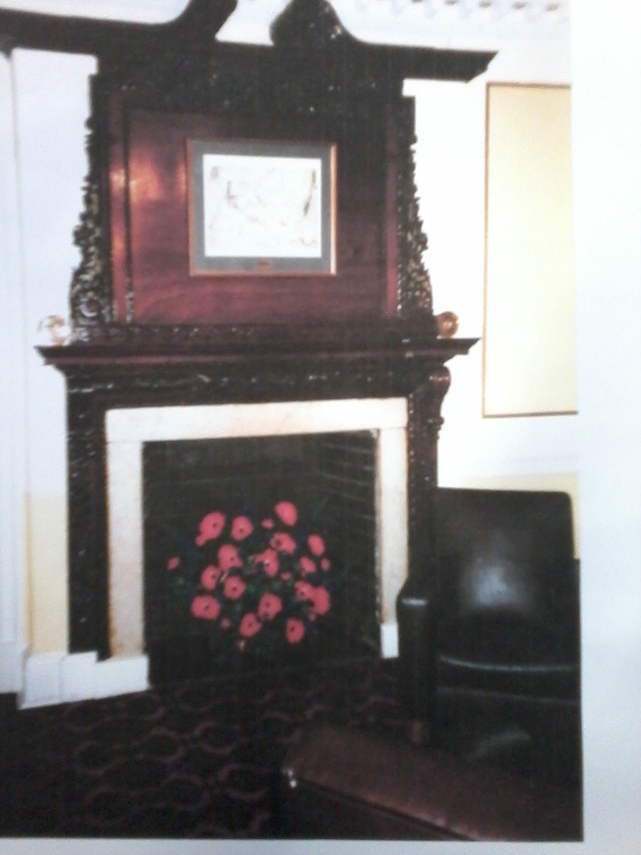A MARRIAGE OF CIRCUMSTANCE
(FELTHAM HOUSE TO FELTHAM GARRISON)
1760 - to present day
by Angela Parton
Thanks to MOD for supplying info and Feltham History Group (Feltham Notes), Local Studies Dept, Feltham Library.
1760's
Part of parcel 88 of Sector F as shown on the Enclosure Map of Feltham 1802. This was one of many old allotments. It stretched from the old track known as Sheep Lane (later Lovers Lane) in the north, to Feltham Brook (now culverted) and consisted of approx. 15 acres. It was known as Fish Pond Close, due to a sausage-shaped pond (now filled).
The area was then considered to be a 'Des Res', as estate agents of today would have put it.
London businessmen were convinced that here, on what was the every edge of a tiny village, was the perfect spot for their home in the suburbs.
Beautiful houses sprang up, from Elm Cottage, next to the Red Lion inn at the High Street end, to the Grange at the Hanworth end. All were demolished apart from Feltham House, situated at the northern extremity of parcel 88.
1770-1841: Feltham Place

FRANCES VILLEBOIS (nee MISS READ)
It is nor known whether the Villebois family built Feltham Place, but they were its first owners and resided there for over 30 years. Frances and William Villebois were Huguenot refugees. Parish registers shed a little light on the family, as they show the baptisms of their children between 1771 & 1782. Mrs Villebois became a widow shortly after that date. In the land tax record of 1785, she is recorded as the proprietor of a sizeable estate, comprising other houses and land in Feltham. The marriages of two of the Villebois daughters are also recorded: in 1793 of Jane Maria, and in 1815 of Charlotte. Frances died before seeing her oldest daughter married.
Before his death, William had a carriage road made through his property, which stretched from Feltham Brook in the south to what is now Hanworth Road in the north. This was so that he would not be forced to use the badly kept main road through the High Street. He built the Villebois Bridge over the Longford River, which was still in existence during the early 20th century. Some of the original 1770's foundations can be found today. Frances Villebois was a great benefactor to the local community and gave a substantial amount towards the rebuilding of St Dunstan's church in 1801, amongst other good causes. The youngest son, Frederic, bequeathed the house, as he is recorded as the owner in 1819, although the house was then occupied by the Cooper family.
1819
Occupied by Sir William Cooper for five years, although still owned by the Villebois family.
1825 - Not occupied
1830
George Thackrah was a builder. and may have been responsible for extensive alterations, such as a new storey. George and Harriet lived there until land and house was sold by the Villebois family in 1841.
After auction it was known as Feltham House owned by John Peisley, an estate agent based in Hounslow.
1847
Augustus Frederick Westmacott owned the house and turned it into a boarding school for young sculptors
1861
The Honorable Charles Peel esquire, secretary of the Red Sea Telegraph Company, together with his wife and six children, were residents.
1870-1880
Charles Morice, a member of Stock Exchange in the city, lived in the house.
1886
Major Browell came to Feltham, looking for land for military use.
1891
The house was occupied by the Fowler family. Robert Fowler and two of his two sons were solicitors. His oldest son was a stud farm manager.
1903
The house appeared in an auction notice in 1903. Its next occupant, Alfred William Smith (A.W. Smith), was Feltham's most famous market gardener. He was nick-named the 'Cabbage King' because he produced one million cabbages per year. He lived there with Anne, his wife, and their nine children.

Gate into gardens of Feltham House showing the narrow lane from Feltham High Street towards Hanworth Park c1920.
View from Browells Lane.
Feltham House c1903
The entrance gates to Feltham House from Browells Lane c1920.
1914
Major Browells is thought to be responsible for the acquisition of Feltham House and surrounding land by the military. In 1914 it was taken over by R.A.O.C (Royal Army Ordnance Corps) and Feltham House became the officers' mess.
The No. 3 Transport Corps was stationed at the site, together with its stores depot, which handled about 800,000 different items from tanks to clothing repair units and also provided training for drivers. Other corps involved with the site were the Royal Flying Corps (RFC), Royal Army Service Corps (RASC) and Royal Electrical and Mechanical Engineers (REME).
The REME were originally stationed at the site but shortly after were moved to a camp at Feltham Hill in Ashford where a vehicle depot was formed to assemble the DUKW for the D-Day landings. After the war, the Headquarters returned to the directorate buildings at the Feltham site.
The airfield was built by Whitehead Aircraft Ltd. In 1917, the company built planes for the RFC, including spitfires, which were built and tested at the site. The RFC ferried them to other bases until the end of WW2.
The airfield was closed between 1919 -1929, when it was reopened by the General Aircraft Company as the London Air Park. Extensive use was made of the site by the corps from 1935-1940, specifically by the No.5 Elementary Flying Training Corps.
At the end of WW2 the company was responsible for the conversion of bombers to civilian transport planes. As a consequence of the opening of Heathrow in 1946, the airpark closed once again and the land was purchased by Feltham Urban District Council and committed to be an open space in 1959.
Pre WW2, the army introduced a light railway, which extended from the main line across the High Street (where Barclays Bank used to be) along Browells Lane through the depot to an area which is now the Brookside estate. The railway was used by the Smith business, as a garrison for stores and by the aircraft company for the supply of raw materials. The garrison remains an ancillary part of the barrack at Hounslow Heath.
There was a considerable amount of local protest to the tramway as it also passed the pond/Green and was described as 'A monstrous sight'.
Talking of annoyances - the only bridle path in Feltham (Lovers Lane) ran from the High Street to Hanworth Park. It was once blocked by a wall erected by the military for security purposes. On Saturday 17th April 1920, a meeting was held on the Green, attended by approx. 2,000 people.
The assembly moved off toward the footpath, carrying a scaffold pole from James Parker's timber yard. They used it as a ram rod to break down enough of the wall to enable pedestrians to pass through. The 'battle of the bridle path' had been won, but arrangements were perhaps not so secret after all, for the whole incident was filmed by the Gaumont company and the film was shown on cinema newsreels all over London.
Sheep Lane or Lovers Lane 1900
A section of Lovers Lane wall that still exists in Elmwood Avenue.
1920-1930
The army christened Elmwood Avenue.
1934
The unit consisted of several hundred tradesmen, including those connected with the Army Motor Transport Corps and the RASC (Royal Service Corp). Facilities included two large vehicle reserve sheds, a depot and workshops, six stores sheds served by the railway spur, and a barrack living complex. The unit also employed civilians.
Relationships with local people improved as the site was the location of considerable social activity, including a grandstand. Many a ball was held below what was the ACSM.
1944
The first munitions were manufactured for WW2. The Feltham area generally had been a prime target for the bombers of the Luftwaffe as it contained not only the Central Ordnance Depot (COD) but the railway marshalling yards, the largest in South East England until their closure in the 1960's. There was also the bomber drome at LAP (Heathrow) and the fighter base at Hanworth Air Park.

On July 19 -20 1944, a VI (doodlebug) hit the RAOC depot. Drums of paint and fuel exploded. Residents thought they were in a middle of a concentrated bombing raid.
1945
The unit was used as a clearance area for mechanical stores: all the equipment that was returned from the war was sent to Feltham to be unpacked, checked, catalogued (Shed D - Redman building, which no longer exists), and then sent for onward shipment throughout the UK.
1960's
The light military railway disappeared.
1962
The survey production group moved to Feltham. The site was described as a 'miscellaneous collection of buildings including garages, barrack blocks and modern special purpose buildings'. Now the whole area has taken on a new lease of life with the erection of custom-built industrial units.
1970 - SPC (Survey Production Centre) named MCE
1971 - The depot ceased its main activities, continuing in a much reduced form as the DG Information Centre.
1979
Barring the canteen building and Elmwood House, all of the other structures south of Elmwood Avenue are long gone. The Metropolitan Police used to carry out riot training in the derelict REME buildings for a short while in the mid seventies.
1982
The southern half of the former RASC depot was redeveloped as Feltham Corporate Centre and adjacent industrial estate, along Plane Tree Crescent and Poplar Way, Residential development around Roebuck Close and Sycamore Close occurred at the same time. Felthambrook Way and Felthambrook Industrial Estate are name after a nearby stream.
1983
The training department moved to the canteen building (previously the FGSSA)
1992
The thirty years since the arrival of the Survey Production Centre has seen a transition through MCE RE to the current Mil Svy DSA nomenclature.
2000 - present day
DGC (Defence Geographic Centre)

The site will be closing in 2023-24 and sold for housing development. The Reach Academy will take over some of the land to extend their school. The fate of Grade 2 listed building Feltham House has still to be decided. It is the second oldest building in Feltham; the oldest are the vestry of St Dunstans church and Red Lion pub.
A photo by Bill Cole of the interior of Feltham House
The photo below shows a Civil Defence Mobility Exercise going past the Red Lion pub in 1956. Photo from Paul Williams (grandfather was councilor Edgar Williams, last chairman of Feltham Urban District Council before it became part of London Borough of Hounslow).



















